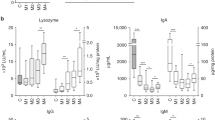Abstract
Objective:
To review the standard processing and testing of human donors and donor milk and to report the frequency of detected markers of potential harm.
Study Design:
This was a retrospective analysis of the data gathered by a donor and human milk screening and monitoring process over a period of 3 years.
Results:
Screening results from 2011 to the end of 2015 demonstrated that careful history taking resulted in rejection or hold of 29.7% of willing donor candidates. Individual infection screening tests rejected an additional 0.3–2.9 per 1000 donations. DNA fingerprinting of donations eliminated 2 out of 13 491. Drug testing rejected 42 out of 12 408 and dilution or adulteration eliminated 73 out of 4935 donations. Only the dilution rejection rate was significantly higher in the remunerated donors. The details of these results are presented.
Conclusions:
There are significant risks involved in the collection, processing and distribution of donor milk-based products. The behaviors of the donors, biochemical and genetic screening and milk processing are critical to mitigation of these recognized risks. Testing at this level of rigor appears to be justified.
This is a preview of subscription content, access via your institution
Access options
Subscribe to this journal
Receive 12 print issues and online access
$259.00 per year
only $21.58 per issue
Buy this article
- Purchase on Springer Link
- Instant access to full article PDF
Prices may be subject to local taxes which are calculated during checkout
Similar content being viewed by others
References
American Academy of Pediatrics, Section on Breastfeeding. Breastfeeding and the use of human milk. Pediatrics 2005; 115: 496–506.
Narayanan I, Prakash K, Murthy NS, Gujral VV . Randomized controlled trial of the effect of raw and holder pasteurized human milk and of formula supplements on the incidence of neonatal sepsis. Lancet 1984; 2: 1111–1113.
American Academy of Pediatrics, Section on Breastfeeding. Breastfeeding and the use of human milk. Pediatrics 2012; 129: e827.
Schanler RJ, Shulman RJ, Lau C . Feeding strategies for premature infants: Beneficial outcomes of feeding fortified human milk vs preterm formula. Pediatrics 1999; 103: 1150–1157.
Schanler RJ, Lau C, Hurst NM, Smith EO . Randomized trial of donor human milk versus preterm formula as substitutes for mothers' own milk in the feeding of extremely premature infants. Pediatrics 2005; 116: 400–406.
Acknowledgements
The author appreciated the employees and staff of Prolacta Bioscience who provided the results of their screening process for this report.
Author information
Authors and Affiliations
Corresponding author
Ethics declarations
Competing interests
The author declares no conflict of interest.
Rights and permissions
About this article
Cite this article
Bloom, B. Safety of donor milk: a brief report. J Perinatol 36, 392–393 (2016). https://doi.org/10.1038/jp.2015.207
Received:
Accepted:
Published:
Issue Date:
DOI: https://doi.org/10.1038/jp.2015.207
This article is cited by
-
Perception of donor breast milk and determinants of its acceptability among mothers in a developing community: a cross-sectional multi-center study in south-east Nigeria
International Breastfeeding Journal (2018)



